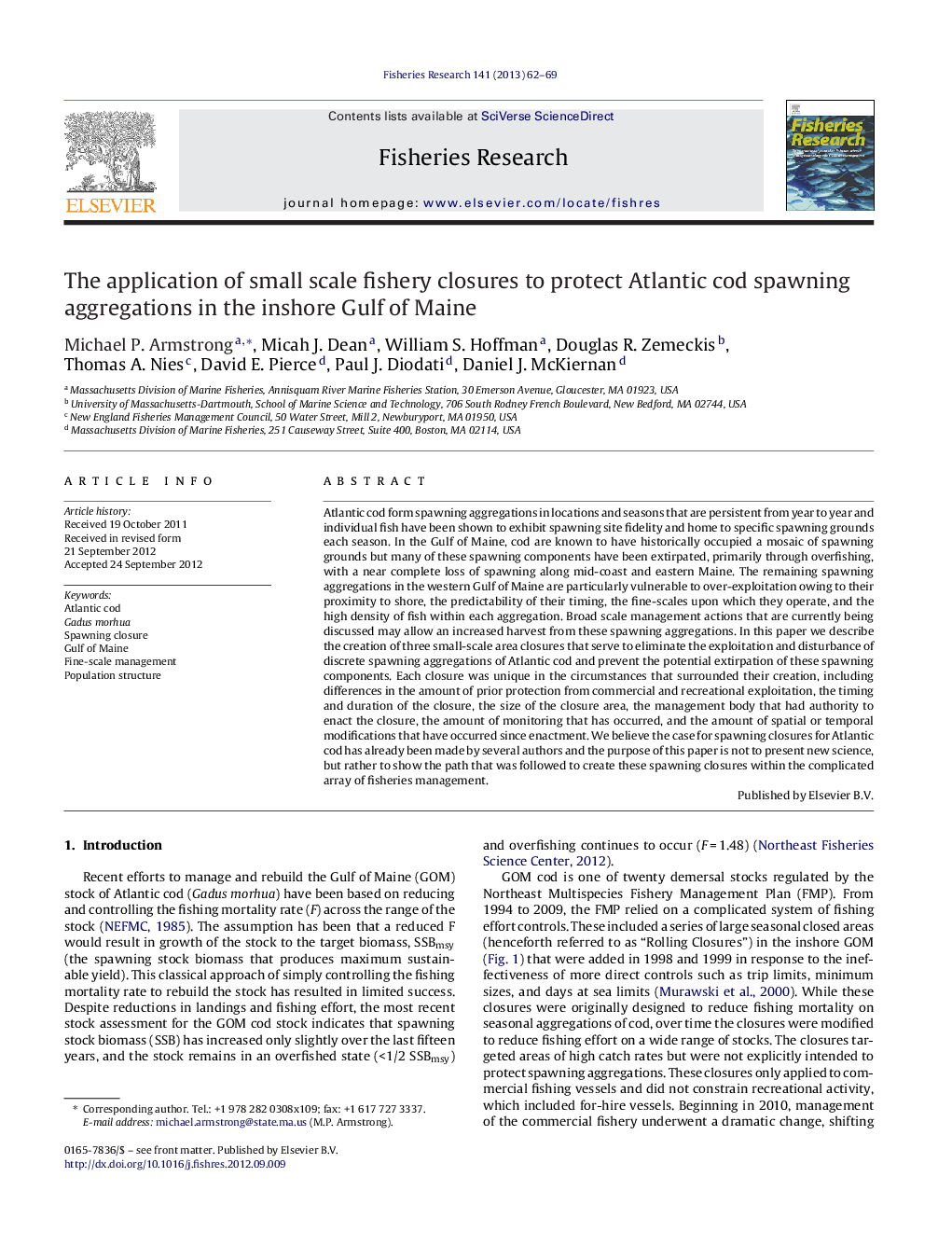| Article ID | Journal | Published Year | Pages | File Type |
|---|---|---|---|---|
| 4543182 | Fisheries Research | 2013 | 8 Pages |
Atlantic cod form spawning aggregations in locations and seasons that are persistent from year to year and individual fish have been shown to exhibit spawning site fidelity and home to specific spawning grounds each season. In the Gulf of Maine, cod are known to have historically occupied a mosaic of spawning grounds but many of these spawning components have been extirpated, primarily through overfishing, with a near complete loss of spawning along mid-coast and eastern Maine. The remaining spawning aggregations in the western Gulf of Maine are particularly vulnerable to over-exploitation owing to their proximity to shore, the predictability of their timing, the fine-scales upon which they operate, and the high density of fish within each aggregation. Broad scale management actions that are currently being discussed may allow an increased harvest from these spawning aggregations. In this paper we describe the creation of three small-scale area closures that serve to eliminate the exploitation and disturbance of discrete spawning aggregations of Atlantic cod and prevent the potential extirpation of these spawning components. Each closure was unique in the circumstances that surrounded their creation, including differences in the amount of prior protection from commercial and recreational exploitation, the timing and duration of the closure, the size of the closure area, the management body that had authority to enact the closure, the amount of monitoring that has occurred, and the amount of spatial or temporal modifications that have occurred since enactment. We believe the case for spawning closures for Atlantic cod has already been made by several authors and the purpose of this paper is not to present new science, but rather to show the path that was followed to create these spawning closures within the complicated array of fisheries management.
► Atlantic cod have complex population structure not considered under current management. ► Spawning aggregations in the Gulf of Maine are vulnerable to over-exploitation leading to extirpation. ► We present 3 case studies where small scale area closures were enacted to protect spawning aggregations. ► Each spawning closure was unique in the circumstances surrounding its enactment. ► These small scale closures are an important tool to be used to restore cod populations.
